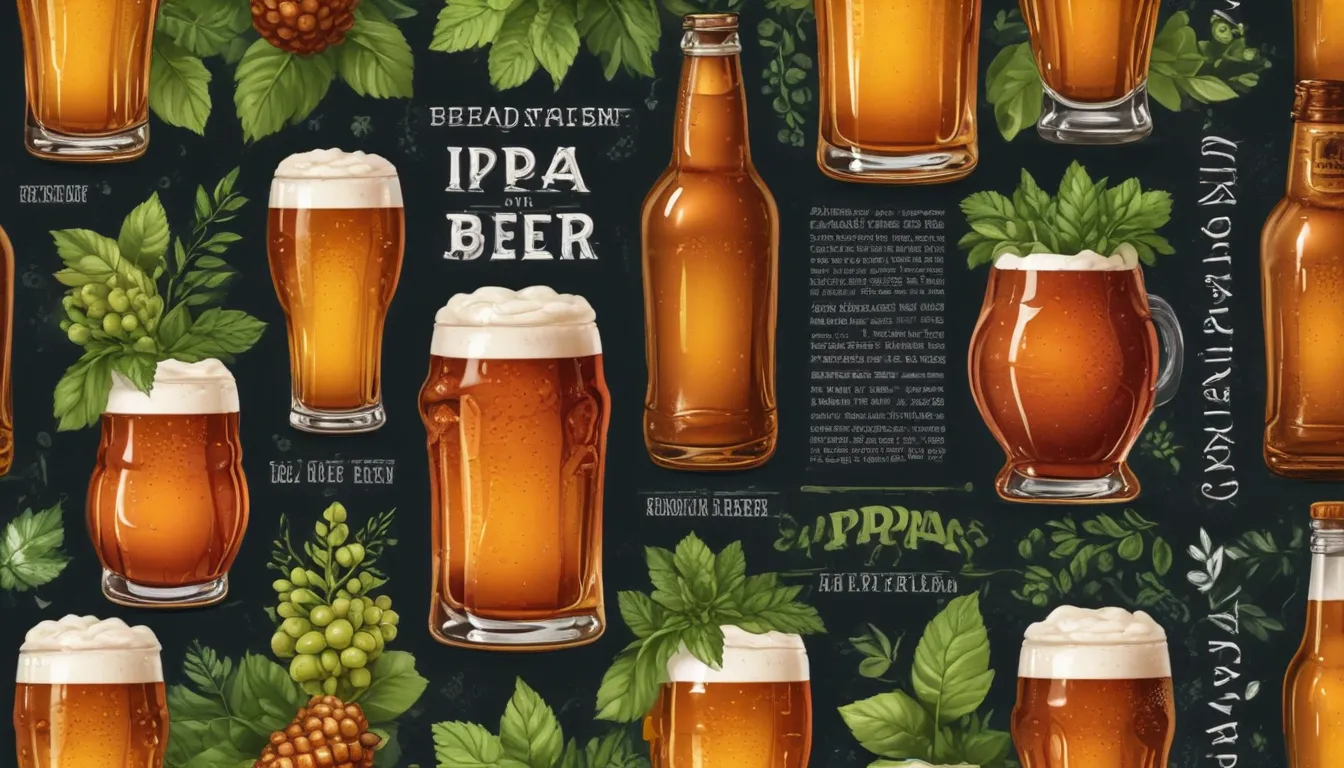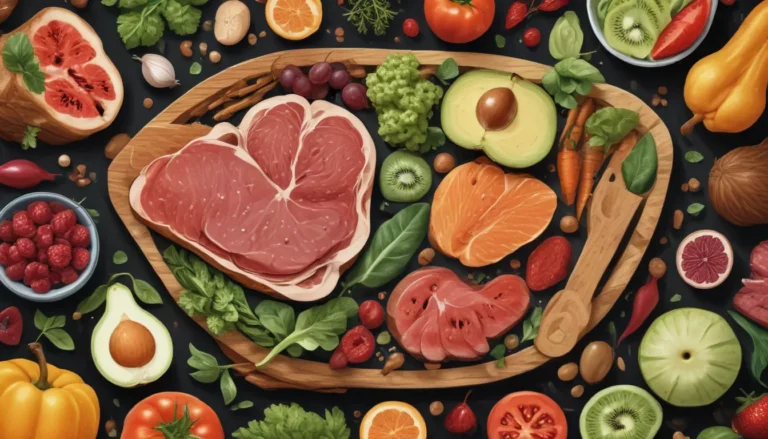The pictures in our articles might not always show exactly what the text is talking about. We use these images to make the article more interesting and eye-catching. They are there to add to the text, but not to replace it or show every detail.
Are you a fan of IPA beer? If so, you might be curious about its nutritional value. IPA, short for India Pale Ale, is a popular style of beer known for its hoppy flavor and aromatic profile. While enjoying a cold IPA is a delightful experience, understanding its impact on your health and wellbeing is crucial.
In this article, we will delve into the nutritional facts of IPA beer, providing you with valuable insights into its calorie content, carbohydrates, protein, and other nutrients. Whether you’re a fitness enthusiast or someone who loves to indulge in a tasty brew, understanding the nutritional composition of IPA beers can help you make informed choices about incorporating them into your lifestyle.
So, sit back, grab your favorite IPA, and let’s explore the fascinating world of IPA beer and its nutritional facts!
Unlocking the Secrets of IPA Beer Nutrition:
- IPA beers have around 200-250 calories per 12-ounce serving, with 15-20 grams of carbohydrates. Enjoy them in moderation due to their higher alcohol content and hoppy flavor.
- IPAs come in various flavor profiles, from citrus-forward to hazy and juicy, making them versatile for pairing with different foods.
Unveiling the Nutritional Facts of IPA Beer:
Calories
An average IPA beer contains around 200-250 calories per 12-ounce serving. The calorie count may vary depending on the specific brand and ABV (alcohol by volume).
Carbohydrates
IPAs typically have a higher carbohydrate content compared to lighter beer styles. On average, IPAs can contain around 15-20 grams of carbohydrates per serving.
Protein
While beer is not a significant source of protein, IPAs usually provide about 1-2 grams per serving.
Fat
IPAs are low in fat, with less than 1 gram of fat per serving.
Alcohol Content
IPAs are known for their higher alcohol content, ranging from 6% to 9% ABV. Remember to drink responsibly and in moderation.
Bitterness
IPAs are often characterized by their strong hop bitterness, measured using the International Bitterness Units (IBUs) scale, which can range from 40 to over 100 IBUs.
Hop Flavor and Aroma
IPAs showcase a wide range of hop flavors and aromas, including citrus, pine, floral, and even tropical fruit notes.
Malt Profile
IPAs typically have a robust malt profile that balances out the hop bitterness, contributing flavors like caramel, toffee, or biscuit.
Vitamins and Minerals
While IPAs are not a significant source of vitamins or minerals, they can contain trace amounts of B vitamins and minerals like magnesium and potassium.
Gluten Content
Most traditional IPAs are made with barley, which contains gluten. Gluten-free IPAs made with alternative grains like sorghum or millet are available for those with gluten sensitivity.
Carbonation
IPAs are typically well-carbonated, adding lively bubbles to the drinking experience.
Enhancing Your Drinking Experience with IPA Beer:
- Various flavor profiles of IPAs from West Coast to East Coast to New England offer versatile options.
- Pair IPAs with dishes like spicy foods, grilled meats, strong cheeses, and creamy desserts to elevate your culinary experience.
Exploring the Art of IPA Brewing and Preservation:
Hops as Preservatives
The high hop content in IPAs acts as a natural preservative, giving them a longer shelf life compared to other beer styles.
Brewing Process
IPAs are brewed using dry hopping, where additional hops are added during fermentation to enhance the beer’s aroma and hop flavor.
Brewing Trends
The IPA beer style continues to evolve with new brewing techniques, experimental hop varieties, and innovative flavors, captivating craft breweries and beer enthusiasts worldwide.
Next time you enjoy an IPA, keep these interesting nutrition facts in mind. From the calories and carbohydrates to the hop flavor and aroma, the nutritional profile of IPA beers adds to the appreciation of this beloved beer style.
Concluding Thoughts on IPA Beer Nutrition:
Understanding the nutrition facts of IPA beer is essential for health-conscious individuals. Enjoying IPA beer in moderation is key, as it is typically higher in calories, carbohydrates, and alcohol content. However, it also provides B vitamins, antioxidants, and minerals like zinc and magnesium. Pairing IPAs with nutritious food and engaging in regular physical activity can help maintain a balanced diet while savoring the flavors of IPA beer.
FAQs About IPA Beer Nutrition:
Q: How many calories are there in an IPA beer?
A: On average, a 12-ounce serving of IPA beer can contain anywhere between 150 to 250 calories, depending on the brand and recipe.
Q: Is IPA beer high in carbohydrates?
A: Yes, IPA beers tend to have a higher carbohydrate content, around 10 to 20 grams per 12-ounce serving.
Q: Are there any health benefits to drinking IPA beer?
A: While consumed in moderation, IPA beer may have health benefits due to its antioxidant properties and potential positive effects on heart health and bone density.
Q: Can drinking IPA beer lead to weight gain?
A: Excessive consumption of IPA beer, given its higher calorie and carbohydrate content, can contribute to weight gain. Balancing overall caloric intake with a healthy lifestyle is important.
Your Trusted Source for Reliable and Engaging Content:
Our commitment to delivering trustworthy and engaging content ensures that each fact shared on our site is contributed by real users like you, guaranteeing diverse insights and authentic information. Trust in our dedication to quality and authenticity as you discover and learn with us.
Uncover the nutritional secrets of IPA beer and make informed choices for your health and well-being while enjoying the delightful flavors and aromas of this beloved beer style.






